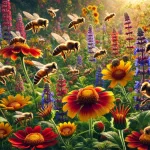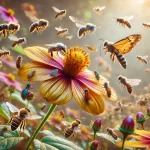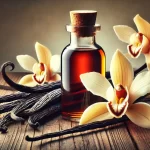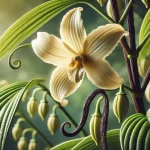Vanilla (Vanilla planifolia) is a tropical orchid whose history is deeply intertwined with the culture and ecology of Mesoamerica. One of the most notable natural elements in its reproductive cycle in its native environment is the melipona bees, stingless bees endemic to the region. These bees played a crucial role in the pollination of vanilla for centuries, establishing a historically and ecologically significant relationship.
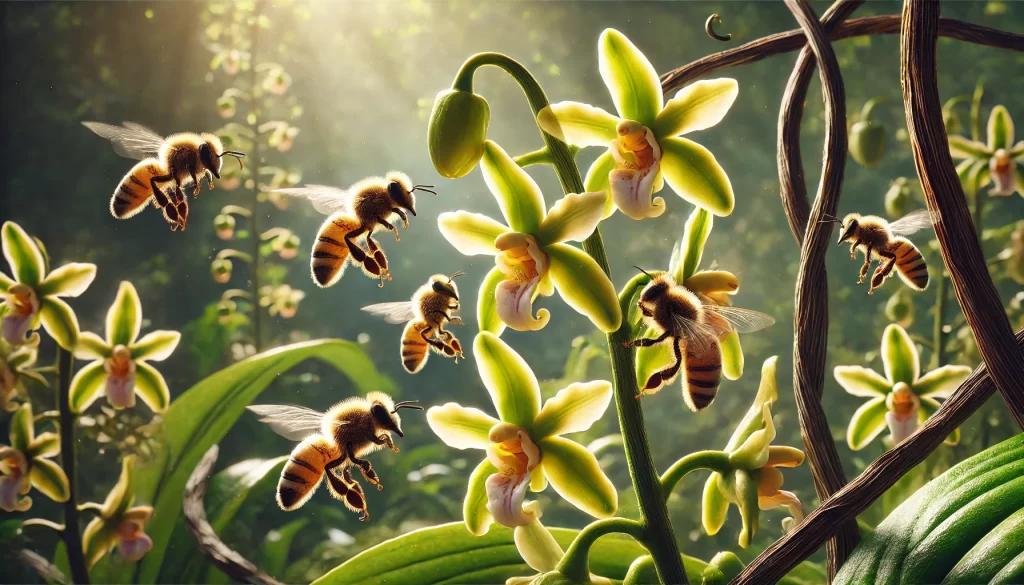
The Melipona Bee and Its Ecology
Melipona bees are native to tropical America, known for their lack of a stinger, which makes them more docile than other species. They live in colonies organized in tree cavities and build hives with wax and resin. Their behavior of seeking nectar and pollen has made them efficient pollinators of various plants, including some orchids like vanilla.
Natural Pollination of Vanilla
In its natural habitat, vanilla has flowers that evolved to be pollinated by specific insects. Among these, the melipona bee stands out for its adaptation to the environment and its morphology, which allows it to access vanilla flowers. When visiting these flowers in search of pollen and nectar, melipona bees transfer pollen from one flower to another, facilitating fertilization and pod formation. This process was carried out naturally and continuously by these bees in the tropical forests of Mexico and other areas of Mesoamerica.
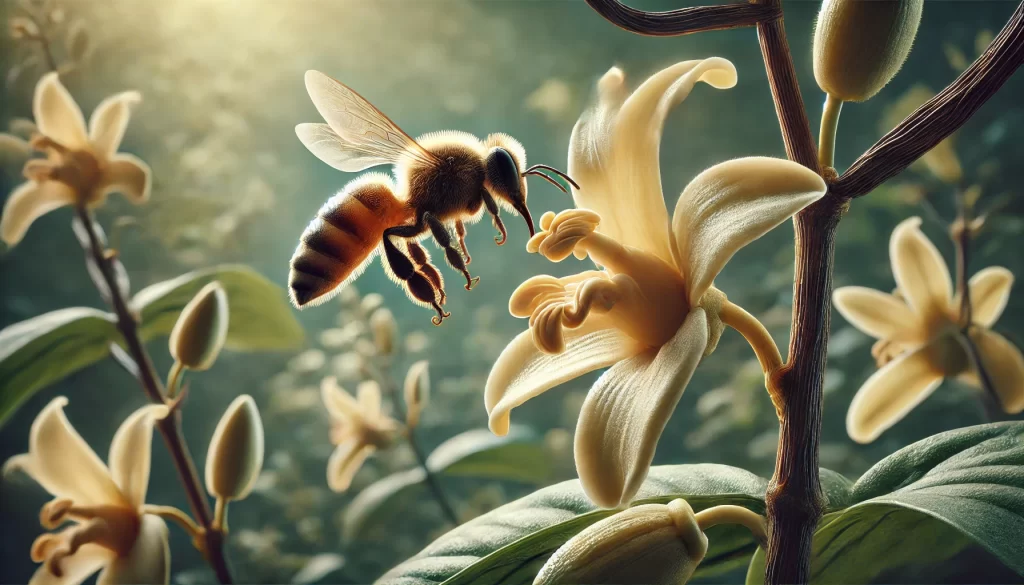
Cultural and Historical Importance
Pre-Hispanic civilizations, such as the Mayans and Aztecs, knew and valued vanilla for both its aroma and its use in ceremonies and gastronomy. Observing the relationship between vanilla and its pollinators, including melipona bees, was part of the ancestral knowledge on how to cultivate and make the most of natural resources. This ecological link emphasizes the interdependence between species and the importance of conserving these ecosystems.
Transition to Manual Pollination
When vanilla was brought to Europe and other parts of the world, colonizers faced the challenge that melipona bees were not present in these new environments. Vanilla’s original dependence on natural pollination by these insects resulted in the absence of spontaneous pollination in plantations outside its native habitat. This led to the development of the manual pollination technique in the 19th century, a laborious but essential method for large-scale vanilla production.
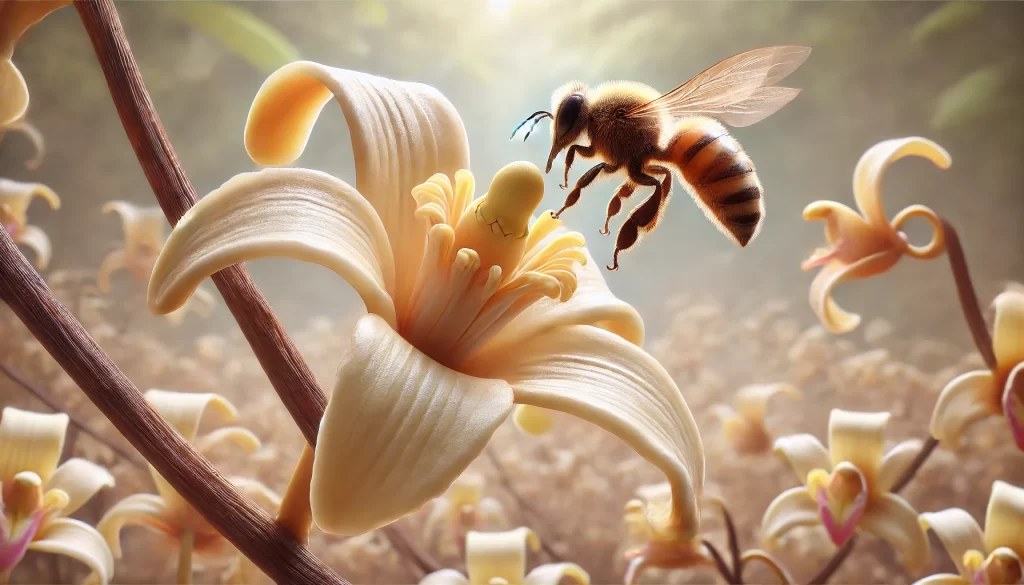
Conservation and Current Reflection
Today, the historical relationship between melipona bees and vanilla serves as a reminder of the importance of pollinators in plant reproduction and agricultural production. The conservation of melipona bees and their habitat is not only vital for biodiversity but also for preserving the traditional and cultural methods associated with these bees. Furthermore, the scientific and agricultural community recognizes the value of learning from these natural processes to improve sustainability in pollination and modern agricultural production.
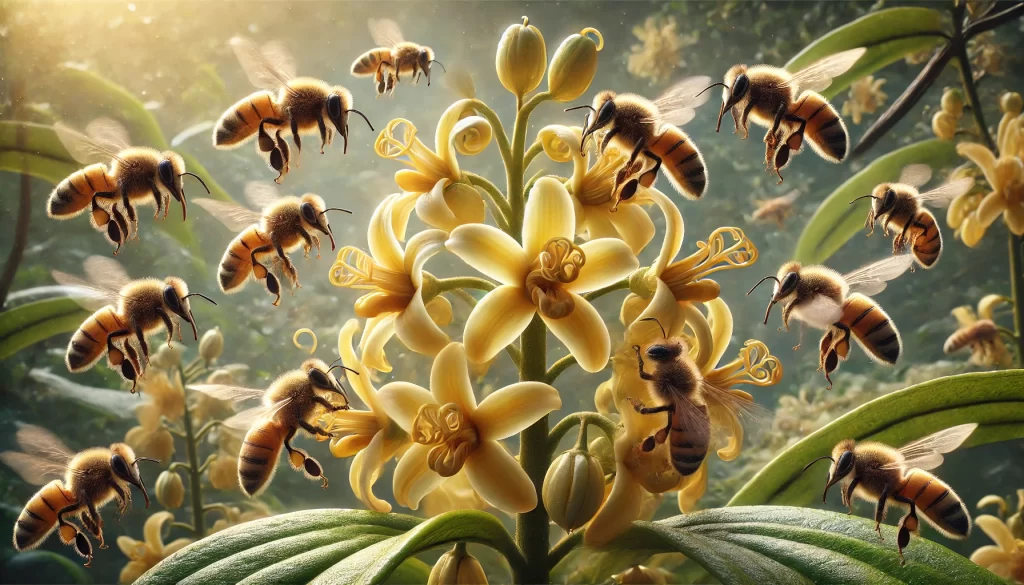
The Legacy of Melipona Bees in Vanilla Production
Although manual pollination is the predominant method in the vanilla industry today, the melipona bee symbolizes an ancestral link between nature and agriculture. Studying and valuing how these bees interacted with vanilla not only enriches our historical understanding but also fosters respect for biodiversity and the search for solutions that integrate sustainable practices in pollination and the cultivation of valuable species.
 AgronoBlog – Agriculture Blog
AgronoBlog – Agriculture Blog 